Ways of Seeing by John Berger Book Notes and Review
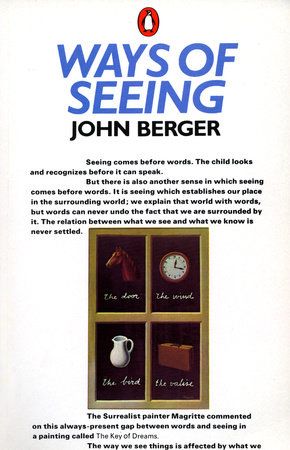 Ways of Seeing by John Berger.
Ways of Seeing by John Berger.
Adapted in 1972 from a TV series this book revolutionised visual criticism and remains in print today some fifty years after it was written. It challenged conventional art criticism in a startlingly bold way and changed art criticism forever. Although it deals mostly with painting and photography some of the cultural criticism is I believe relevant to Architecture. It’s key arguments seem ever more urgent in the image hunger age of the internet. I think anyone interested in Architecture or Design or even mass media should read this book. Below is a summary and set of book notes with short review.
Introduction
Ways of Seeing by John Berger is the book adaptation of the BBC television series made in 1972. The TV series was four 30 minute long episodes meant as a response to Specifically Kenneth Clark’s Civilisation and more generally to traditional forms of Art criticism.
The book had a few contributors besides Berger, Stephen Dibb, Sven Blomberg, Chris Fox, and Richard Hollis. Split into seven Chapters or Essays four of which have writing and three which are purely images.
Contents an Key Ideas
Ways of Seeing covers four key ideas spread over four essays, there are also three picture essays with no words which provide a kind of space for the essays and provoke themselves themes based on Berger’s arguments in his other essays.
The four key ideas are;
- Chapter 1 Seeing art, the importance of social and historical context when looking at art, the mystification of art.
- Chapter 3 Women in art and their role as subjects in artwork.
- Chapter 5 Ownership in European oil painting.
- Chapter 7 Advertising imagery and modern day image culture.
I have missed out the purely visual essays here but they are worthy of consideration and a good reason to pick up the book if only there was a better color version to recommend.
Chapter 1
The TV series starts with a bang and sets exactly the right tone for the whole. John Berger narrates in the background as we watch him with knife in hand gouge out a face from a Renaissance painting.
The Book starts maybe a little more quietly but the first sentence also sets the tone.
Seeing comes before words. The child looks and recognizes before it can speak.
Seeing is fundamental. But it’s not only for looking out it is for placing oneself in relation to what one sees. Both physically and metaphorically as we will see as this book progresses. Seeing is not a neutral thing but always a way of seeing.
We never look at just one thing; we are always looking at the relation between things and ourselves.
Nobody has a relationship to images which is uncritical. We can’t help but see the world, and the world presents us with images in return. By seeing we establish our place within that world. What we see and the way we see it affects us and affects our place within that world.
The second main point in Chapter One is that what we see and how we see it is mediated by culture and in some cases that culture has an agenda which may obstruct, and obfuscate the plain meaning of these images. This is meant to make people see things in a different way from what is meant or to hide the original meaning. Oil Painting is an example which Berger brings up. He calls this Mystification.
Berger uses the example of the Two Volume study of Frans Hals by Seymour Slive. In Regents of the Old Men’s Alm House by Hals. Slive frames the picture in terms of the artists technique, skill and vision. There is no mention of the fact Hals was eighty years old penniless and living off of alms from the very same clients that commissioned the painting. One Man in this painting looks drunk, hat skewed to side eyes staring unfocussed forward face blotchy. For Slive this interpretation is unthinkable.

Regents of the Old Men’s Alm House by Frans Hals (source)
This, he suggests, is a libel. He argues that it was a fashion at the time to wear hats on the side of the head. He cites medical opinion to prove that the Regent’s expression could well be the result of a facial paralysis. He insists that the painting would have been unacceptable to the Regents if one of them had been portrayed drunk.
The official page of the Painting on the Hals museum website gives exactly the same opinion. It’s quite strange the disconnect between pretty obvious reality and the story of the painting which must be neutered. This is described by Berger as mystification.
Mystification is the process of explaining away what might otherwise be evident.
The direct response to the painting, the scenes portrayed is hidden or obfuscated by the cultural layer around it, no doubt it’s boldness as social criticism is completely bypassed also. There has been a Mystification of the painting, a meaning that only the gatekeepers can decipher, the plain meaning hidden. Berger wants to demystify art or more correctly demystify art criticism.
Chapter 3
The subject of Chapter Three is Women in Art and how they are perceived. Women and men are perceived differently in society and in art and oil painting in the western tradition this difference is clear.
A man’s presence depends on the promise of power which he embodies. A woman’s presence expresses her attitude towards herself, and defines what can and cannot be done to her. To be born a woman was been to be born, within an allotted and confined space, into the keeping of men.
And so she comes to consider the surveyor and the surveyed within her as the two constituent yet always distinct elements of her identity as a woman.
Men survey women before treating them. Consequently how a woman appears to a man can determine how she will be treated.
One might simplify this by saying: men act and women appear. Men look at women. Women watch themselves being looked at. This determines not only most relations between men and women but also the relation of women to themselves. The surveyor of woman in herself is male: the surveyed female. Thus she turns herself into an object — and most particularly an object of vision: a sight.
In European oil painting this especially is a key recurring subject. So in European painting we can see some of the criteria by which women have been judged over the ages.
The Genesis story already tells us how it might go. It is the women blamed for both Adam and Eve’s transgression. The women is condemned to childbirth and to be subservient to man. Other more secular themes later began to appear.
The mirror was often used as a symbol of the vanity of woman. The moralizing, however, was mostly hypocritical.
You painted a naked woman because you enjoyed looking at her, you put a mirror in her hand and you called the painting Vanity, thus morally condemning the woman whose nakedness you had depicted for your own pleasure.
The mirror was a way of turning the women we looked at into a sight. See the prototypical beauty contest with the element of judgement added a contrivance that comes down through the ages. Beauty becomes competitive and so those who are judged beautiful are beautiful and those judged not beautiful are not.
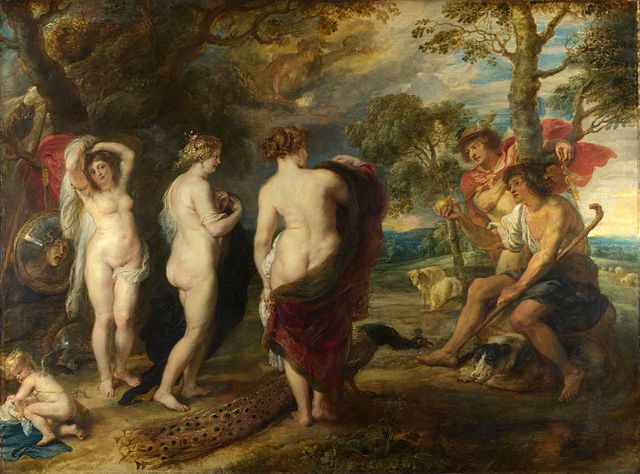
The Judgement of Paris by Ruebens (Source)
Berger calls on the naked portrait of Nell Gwyn a mistress of King Charles II of England to illustrate nakedness vs the nude. Nell Gwyn’s nakedness is not an expression of her own feelings but a submission to her owners demands or wishes.
European art aside from other traditions is on its own in this type of portrayal Nudity as opposed to Nakedness. The Nude is always conventionalised and the authority derives from the tradition.
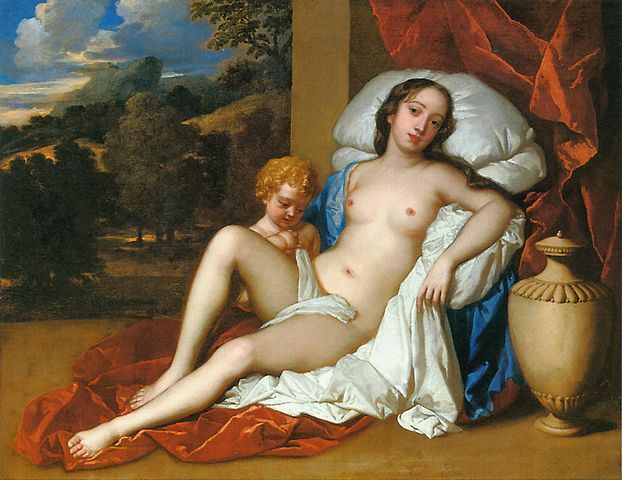
Nell Gwynne by Lely 1618-1680 (Source)
To be naked is to be oneself. To be nude is to be seen naked by others and yet not recognized for oneself….Nudity is a form of Dress.
Expressions of Naked women in oil painting can be compared to naked women in girlie mags and seen to be quite similar. Male lovers are sometimes depicted in oil paintings but their female lover is usually not looking at him but at you.
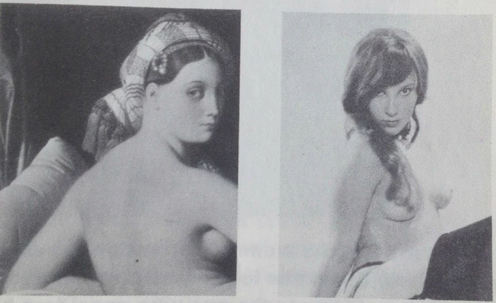
Illustration of the expression of Women in an Oil Painting and a Girlie mag compared from Ways of Seeing
There are a few and great exceptions in the Oil Painting history for example Danäe by Rembrant 1606-1669. Often painted the great geniuses of painting these are the exceptions where the artist has been able to break the conventions.
The system of gender relations encoded in oil painting has come under pressure its not as universal today but it is more widely evident also in media like advertising, journalism and television. The male is still the spectator and the female forced to watch herself as an object.
Chapter 5
In this chapter the focus is on oil painting especially between 1500 and 1900s. Oil paintings are exchange status symbols.
Oil paintings often depict things. Things which in reality are buyable. To have a thing painted and put on a canvas is not unlike buying it and putting it in your house. If you buy a painting you buy also the look of the thing it represents.
Oil painting changes at the same time as Capitalism takes hold in the West. This tradition set the norms that mostly continued to hold through to the modern age in terms of advertising. Within this context what is love of art but the desire to possess.
Oil painting reduced everything to the ’equality of objects‘ here the tradition glorified physical objects even as they stood in for metaphysical ideas.
This is why according to Berger hack works are often beside outstanding work with no differentiation of presentation. The true work of the average painter are produced more or less cynically according to Berger.
This analogy between possessing and the way of seeing which is incorporated in oil painting, is a factor usually ignored by art experts and historians.
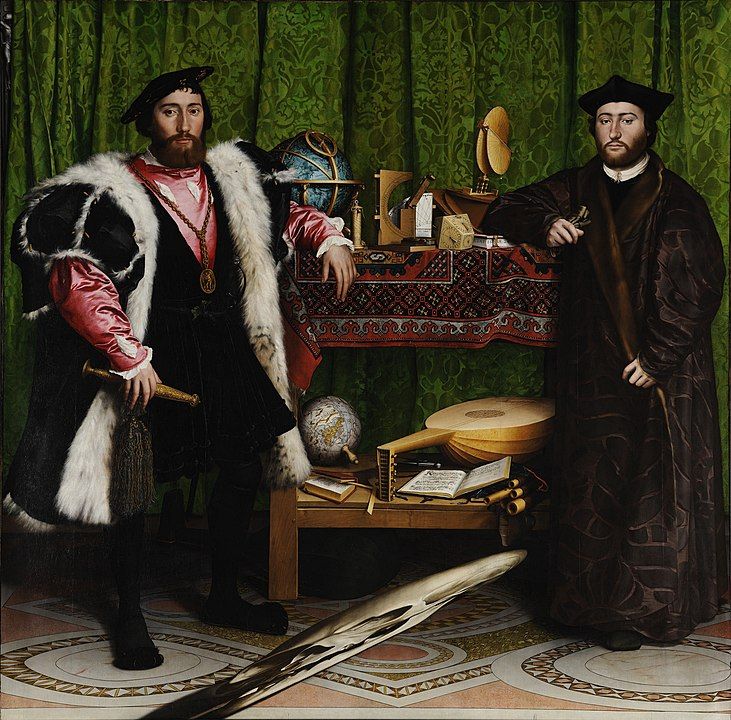
Holbein The Ambassadors 1533 (Source)
In Holbein’s The Ambassadors the objects are painted in exquisite detail but the skull in the foreground is painted with the perspective totally different. Commonly known as a memento mori it’s a moral warning of death, and interestingly its been painted as though in a different dimension to the rest of the painting. This is how Holbein gave the skull added symbolism, as the perspective of the rest of the painting depicted a more worldly metaphysical reading. The men in this paining believed the world was there to serve them. The people and objects in the painting in the normal perspective are thus painted as collections of things, of possessions. The skull as a symbol of death, not an object, is painted in a different perspective.
Berger now looks at the way oil paintings are insulated from this sort of criticism normally, they are morally mystified.
Until very recently — and in certain milieux even today — a certain moral value was ascribed to the study of the classics. This was because the classic texts, whatever their intrinsic worth, supplied the higher strata of the ruling class with a system of references for the forms of their own idealized behaviour. As well as poetry, logic and philosophy, the classics offered a system of etiquette. They offered examples of how the heightened moments of life — to be found in heroic action, the dignified exercise of power, passion, courageous death, the noble pursuit of pleasure — should be lived, or, at least, should be seen to be lived.
This criticism is also valid for Classical Architecture, a certain etiquette of building presentation defines the power structure and the entire frame of reference.
Berger looks in turn at different genres of oil painting during this time. Still life which is often very reflective of the wealth of the patron. The high moral and cultural worth of these paintings is projected using the knowledge of classical stories, a knowledge set only the exceptionally wealthy were educated in so this inside language tells a story which only the super wealthy can undersatnd. Naturally they confer a high moral value to these pictures, Berger in his turn ascribes a low moral and cultural value to most of these paintings, great examples aside.
Genre painting according to Berger satisfies a lower rung on this cultural ladder to which the aspiring can attain. It in itself reinforces the set of cultural mystifications for oil painting as a whole.
Landscape painting suffers the least from this Mystification though it still suffers. Example of this given by Berger is Gainsborough’s Mr. And Mrs. Andrews

Mr. and Mrs. Andrews by Gainsborough (Source)
The painting shows a wealthy couple standing in the midst of their estate. The landscape is painted as property another possession like a cow in the field. This possession of the landscape I guess comes into painting from the 18th Century onwards. The industrial revolution and the discovery of nature as an activity brings nature much more into man’s domain.
Chapter 7
In Chapter 7 Berger turns his attention to advertising images specifically and more generally the bath of images in which we all sit. We have more images surrounding us than at any time in human history (this has only become more so during the fifty years since the time of this books publishing).
Advertising trades off of envies and those desires it can instil in people, a hypothetical future transaction but with little relation to the reality with which that object really has.
Being envied is a solitary form of reassurance. It depends precisely upon not sharing your experience with those who envy you. You are observed with interest but you do not observe with interest — if you do, you will become less enviable. In this respect the envied are like bureaucrats; the more impersonal they are, the greater the illusion
Berger sees the joy of being envied by others as a substitute for the vacuous feeling of ownership in an oil painting. Cultural value is often thought of as spiritual but luxury is by definition the domain of the wealthy, the opposite then of spiritual. Women here again are similarly objectified and their roles prescribed within limited parameters. A new concept of Glamour a type of social envy is substituted for moral value.
Glamour is a modern invention. In the heyday of the oil painting it did not exist. Ideas of grace, elegance, authority amounted to something apparently similar but fundamentally different.
Glamour cannot exist without personal social envy being a common and widespread emotion. The industrial society which has moved towards democracy and then stopped half way is the ideal society for generating such an emotion.
Glamour is dependent on social envy and the glamour of the subject. The objects advertised attempt to have a value based on this premise. For advertising to work it has to undermine peoples satisfaction with their lives and offer an aspiration of something better even if this is a mirage.
Advertising is fundamentally nostalgic and attempts to use all needs, desires, social relations to make us consume this is its power dynamic.
Critisism
So Ways of Seeing has been a massive popular and critical success. It has sold over a million copies and is still in print fifty years after being published. Just single chapters of this book have been used by others as foundational texts for their own theories. Feminism has incorporated much of the male gaze for example. I have yet to read a really robust theoretical denial of the general theories here of meaning in paintings either.
I have quoted a Peter Woollen article below which does mildly critisise Berger.
Berger’s reputation is that of a political radical, a romantic Marxist, a sympathiser with the underdog and the lonely rebel, a social critic and an outspoken castigator of market values — especially art market values — and of a predatory capitalism. Yet he is also obsessed by the past, even by the distant past — at times he is a romantic, at times a classicist. On occasion he has the appearance of a stubborn conservative, disregarding or brusquely dismissing new trends and new fashions. I anticipated positive references to Millet, Courbet, Cézanne and Van Gogh, but I was surprised to find how seriously artists such as Piero della Francesca, Dürer, Grünewald, Hals, Rembrandt, Poussin, Watteau or Goya are presented as templates for great art, today as in the past.”
Peter Wollen · Hare’s Blood: John Berger · LRB 4 April 2002
I agree with this mild criticism however part of the strength of Berger’s argument is that he can show examples from contemporous times which illustrate his reading both for and against. We often value the works of Great Masters Berger shows, because they have undermined these mystifications of the current dogma. We are thus free to find good and bad examples across times and between styles. There is no sucessful artistic style that can totally break with those cultural values from which it came.
Applications to other Fields
So art, feminism and politics clearly has a lot to learn from Berger. How about Architecture? Well it’s not really obvious but maybe still there is a lot here for the Architect. That Architecture in this age was dominated by the Classical style with its adherence to style books, to history and context. The framework for these styles implied a social structure of familiarity with the Classical types that elevated it above vernacular local architecture artificially. You could argue this was a type of mystification in itself.
Onto Modernism or the modern world and although culture is too diverse to support one house style we all live in a culture dominated by the media cycle.
Being aware that in Architecture too there are Ways of Seeing means we can be aware of these currents in our culture and at least not be naive consumers of them.
Conclusion
Buy this book and read it.
Most people will love it, but if you hate it or are indifferent to the stark arguments in it you at least know what you have to argue against. This book has general application for everyone, for an Architect it doesn’t immediately seem that relevant. It doesn’t address experiential understanding of Architecture like the work of Juhani Pallasmaa for example. But as I have earlier pointed out Architecture is a practice that is part of mass media whether we like it or not.
Further Reading
- Ways of Seeing Original TV series (You Tube)
- Puritanic rationalism:John Berger’s Ways of Seeing and media and culture studies
- A nice set of notes summarising the book here
- A Book Reader; An Analysis of John Berger’s Ways of Seeing (The Macat Library) by Emmanouil Kalkanis
- Bergers First Chapter especially owes alot to The Work of Art in the Age of Mechanical Reproduction by Walter Benjamin.